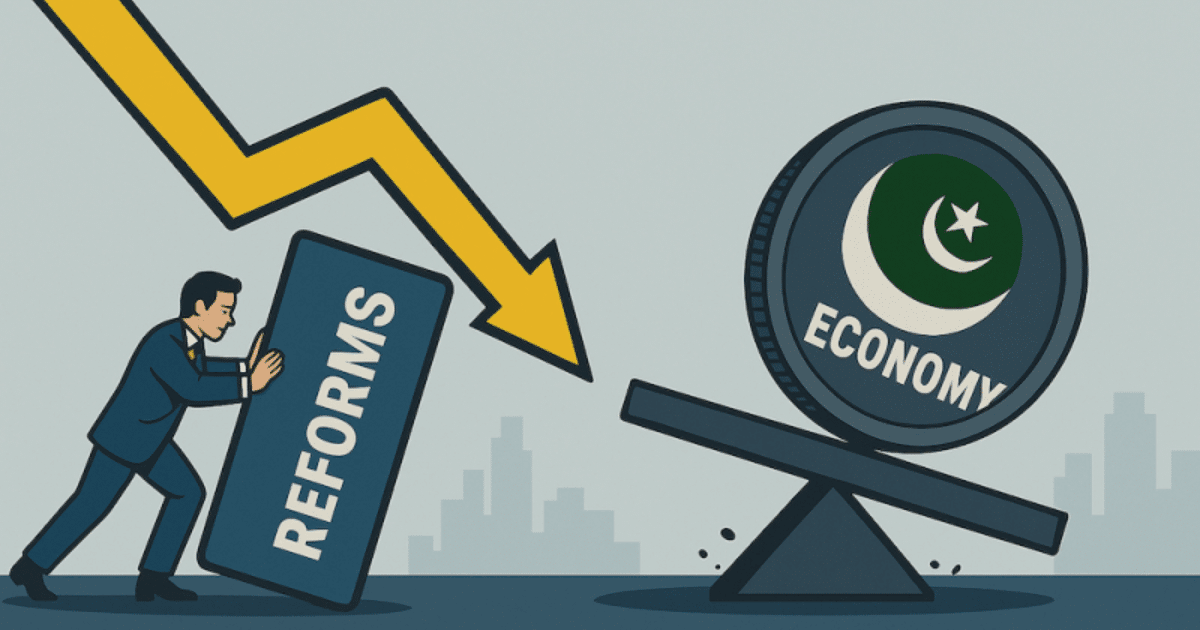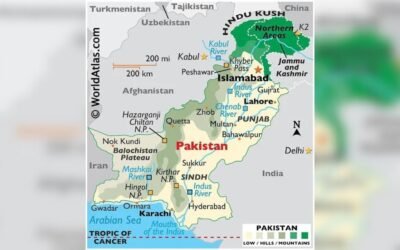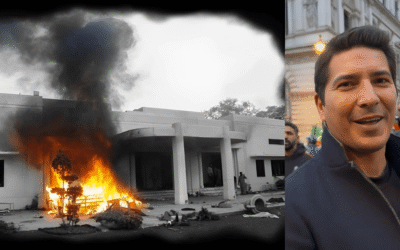In 2025, Pakistan is facing serious economic problems. Prices are high, the economy is weak, and the country owes a lot of money. In response, Prime Minister Shehbaz Sharif started a five-year plan called Uraan Pakistan. This plan is backed by a $7 billion loan from the International Monetary Fund (IMF). The goal is to move Pakistan from constant crisis to a growing economy that focuses on exports.
However, many experts worry that strict budget cuts, low investment, and poor planning may lead to a recession rather than genuine reform. So, the big question is: Can Pakistan’s government handle this challenge?
A Deep Crisis and a New Plan
When Sharif took office in early 2024, the situation was dire. Inflation was close to 28.3%, foreign exchange reserves were almost gone, and factories were shutting down. The economy barely grew at all.
To fix this, the government launched Uraan Pakistan. The plan aims to raise growth to 6% by 2028. It wants to collect more taxes, improve government companies, and work with private businesses in fields like farming, textiles, technology, medicine, and energy. It also ties in with the United Nations’ Sustainable Development Goals (SDGs).
The IMF Deal and Conditions
With the IMF’s help, Pakistan agreed to major reforms. These include collecting more taxes, fixing loss-making state-owned companies (SOEs), cutting energy waste, and improving how the government works.
In May 2025, the IMF approved another $1.4 billion under the Resilience and Sustainability Facility (RSF). This money helps Pakistan prepare for climate change and natural disasters. The government also promised to publish reform plans by October 2025 and fix SOEs by mid-2025.
You May Like To Read:
- Why More Women Are Entering Politics—And Winning
- Pakistan’s Looming Refugee Crisis: What Happens If We Don’t Prepare
- Pakistan and the Fallout of the U.S. Withdrawal from Afghanistan
Some Progress—but Still Weak Growth
By mid-2025, inflation dropped to 3.5 – 4.5%, the lowest in nine years. This allowed the central bank to lower interest rates to 11%. Reserves went up to $14 billion, thanks to IMF payments and tighter control over currency trading. In July 2025, S&P Global upgraded Pakistan’s credit rating to “B-”, showing some trust in the country’s efforts.
Still, the economy is not growing fast. GDP is expected to grow by just 2.7% in 2025, with small increases in the next two years. Poor results in farming and factories make it hard to believe that a strong recovery is on the way.
Tight Budgets vs. Development Needs
The new budget for the 2025-26 fiscal year set the fiscal deficit target at 6.2 trillion rupees. But this means cutting funds for development projects. Spending on things that grow the economy is down, while defense spending rose by 20% due to tension with India. It now takes up nearly 19% of the total budget.
Some experts say this focus on paying debt and cutting costs will hurt long-term growth. Taxing agriculture and cutting power subsidies are also making things harder for ordinary people.
Reforms on Paper – But Hard to Do
The government has made big promises—like digitizing tax systems, fixing SOEs, and making markets more competitive. But turning these plans into action is difficult. Past reforms often failed due to weak political will or strong resistance within the system.
The IMF has already warned that delays in important reforms could stop the recovery. For example, the reform deadlines are slipping, and key changes in SOEs and governance are behind schedule.
A special council called SIFC (Special Investment Facilitation Council) was formed to attract investment. It includes both civilian leaders and the Army Chief. Some fear this might let the military influence the economy too much, scaring away private investors.
Private Sector Still Holding Back
Both the Asian Development Bank (ADB) and the World Bank agree: Pakistan must make it easier for private businesses to grow. But businesses face high taxes, trade limits, power shortages, and weak legal systems.
Instead of taxing the rich, the government depends heavily on sales taxes and other unfair taxes. This disproportionately affects low-income individuals and reduces local demand.
The World Bank’s new $20 billion, 10-year plan for Pakistan focuses on collaborating with private companies, reforming the energy sector, and developing digital tools to support sustainable growth.
Big Risks: War and Weather
Pakistan is also at risk from outside shocks. Massive floods caused by climate change have damaged roads, crops, and the economy—especially in farming and tourism. These disasters show why the climate part of the IMF’s RSF loan is so important.
At the same time, if tensions with India increase or political unrest grows, the economy could suffer significantly. The IMF has already warned that such events could derail everything.
Real Signs of Recovery? Or a Masked Recession?
Pakistan stands at a crossroads:
- Can it really collect enough taxes to lower the debt? Only 1.3% of people pay income tax.
- Will government companies and energy reforms actually happen this time?
- Will military involvement in the economy cause problems for private investors?
- Can the public handle more cuts without major protests?
- Are the growth targets realistic? Some experts doubt the 4.2% growth forecast for 2026.
If these questions aren’t answered, Pakistan may end up in what experts call a “recession disguised as reform.” That means the economy might look stable on paper, but most people will still be struggling.
Conclusion: Reform or Recession?
Pakistan’s economy has improved in some areas, thanks to the IMF and the government’s commitment. But tight budgets alone cannot fix long-term problems.
The real challenge is reforming the system—making it more fair, transparent, and able to attract serious investment. Pakistan needs to move beyond short-term fixes. To avoid another crisis, it must build strong institutions, trust, and a fair economy that works for all.
If that doesn’t happen, the reforms of today might just lead to a deeper recession tomorrow.







